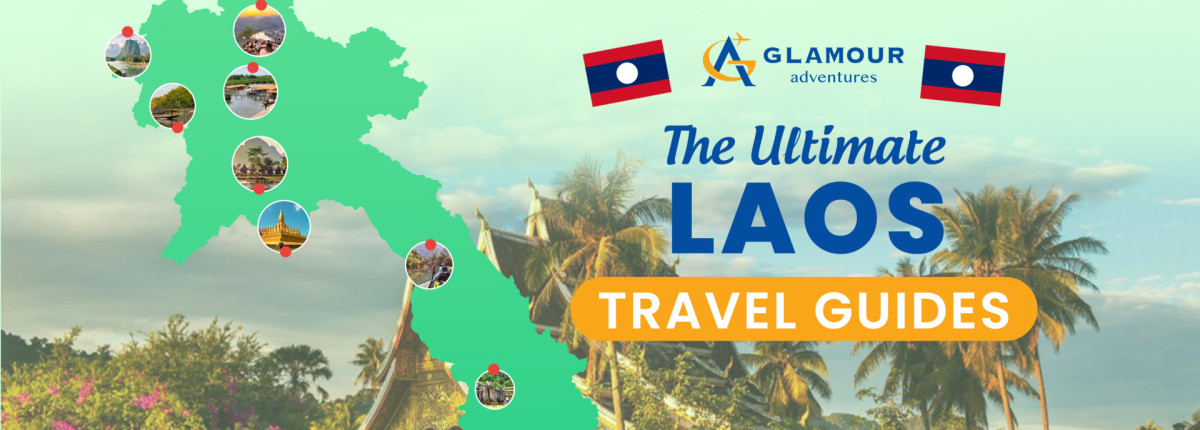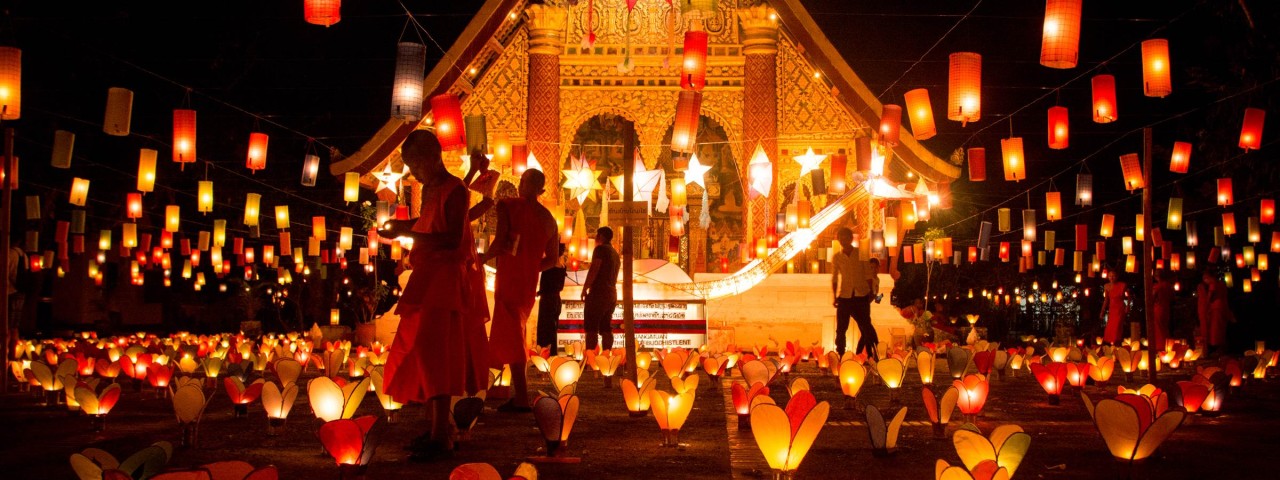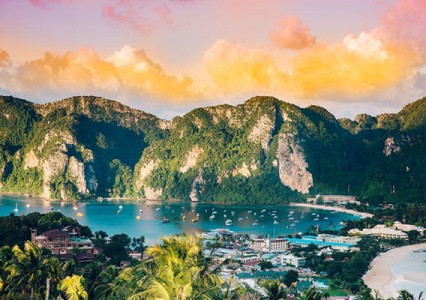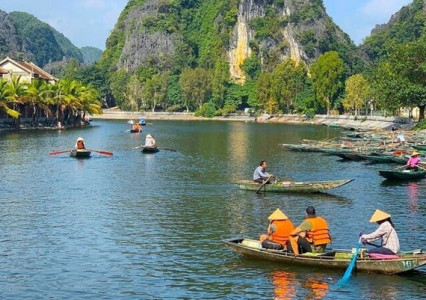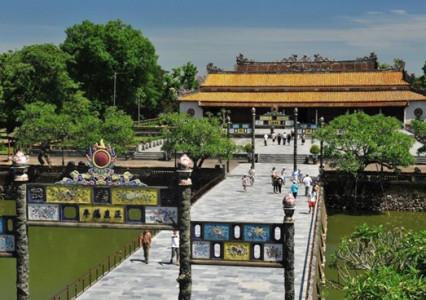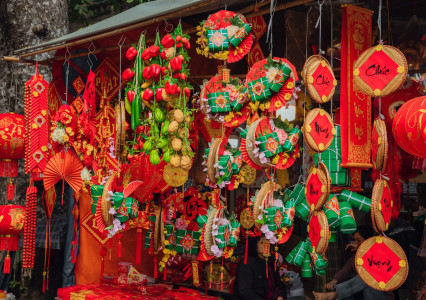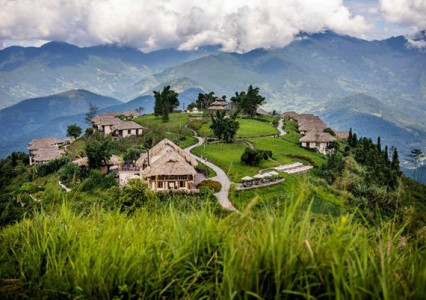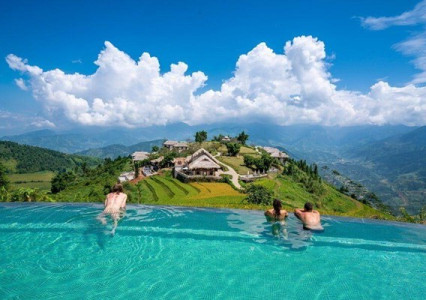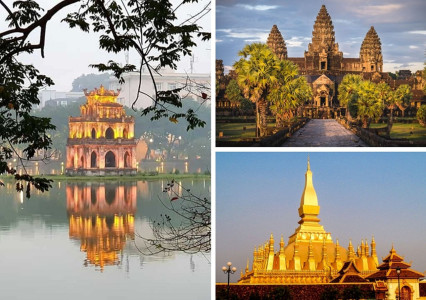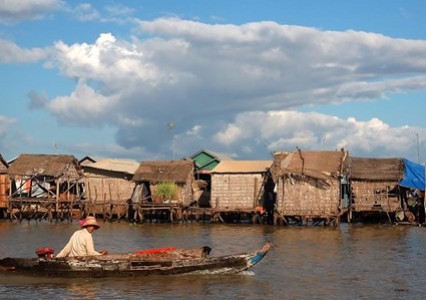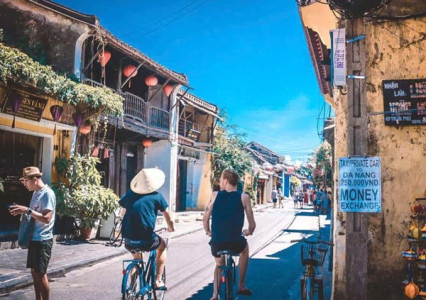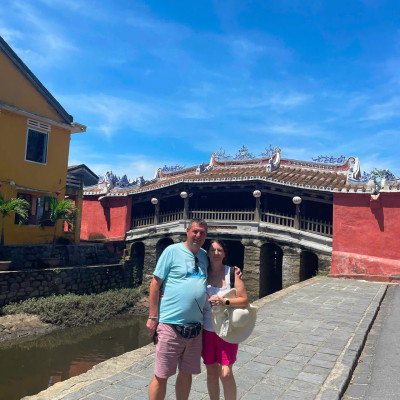Your Ultimate Travel Guide to Laos: Everything You Need for an Unforgettable Holiday
1. Introduction to Laos
Capital: Vientiane
Area: 236,800 km²
Population (2024): Approx. 7.5 million
Timezone: UTC +7
Tucked away in the heart of Southeast Asia, Laos is a landlocked country known for its untouched natural beauty, laid-back lifestyle, and deeply spiritual culture. Often overshadowed by its neighbors, Laos offers a peaceful and authentic travel experience, rich with waterfalls, forested mountains, French-colonial towns, and golden Buddhist temples.
Laos remains one of the most traditional nations in the region, where monks in saffron robes walk quietly through misty streets at dawn and rivers still serve as lifelines for transportation and trade. Whether you're exploring the tranquil capital Vientiane, discovering ancient ruins in Champasak, or soaking in the charm of Luang Prabang, a UNESCO World Heritage City, Laos invites visitors to slow down and connect with its timeless rhythm.
The country’s culture is shaped by Theravāda Buddhism, traditional animist beliefs, and a history that includes both colonial influence and resilient independence. Lao food, music, and festivals reflect this rich cultural fusion, while the genuine warmth and hospitality of the Lao people make every interaction memorable.
Still largely untouched by mass tourism, Laos offers incredible value, serene landscapes, and deeply moving cultural encounters—perfect for travelers seeking reflection, adventure, and something truly authentic.
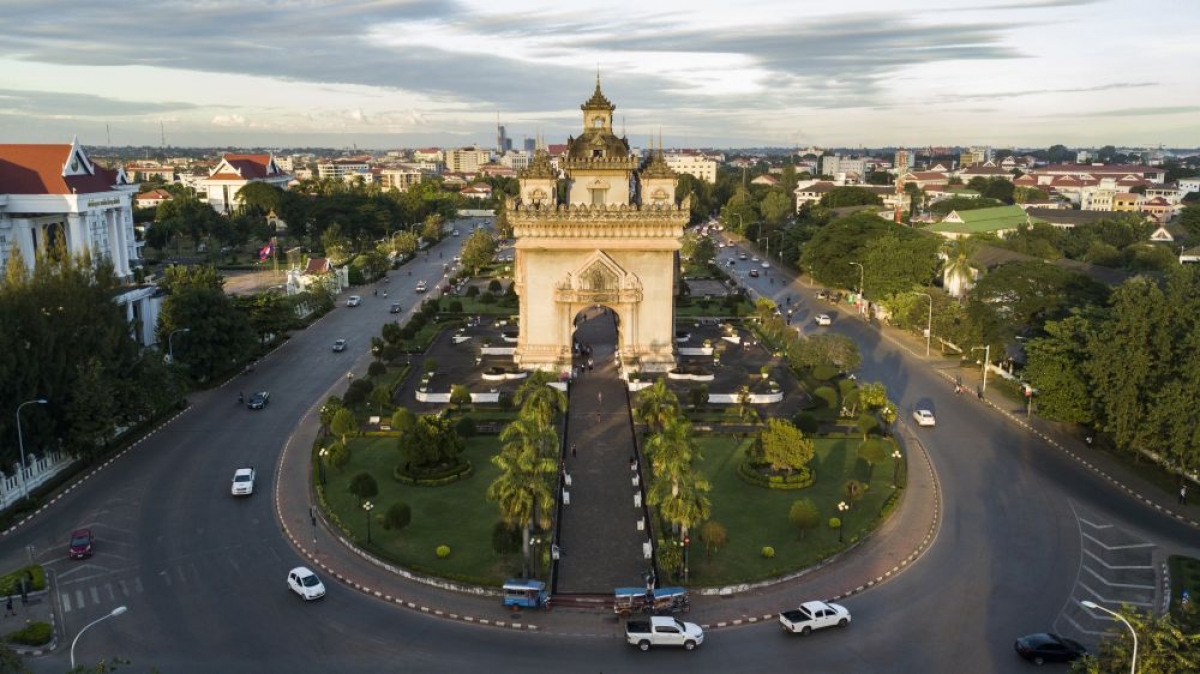
2. Geography of Laos
Located in the heart of the Indochinese Peninsula, Laos is the only landlocked country in Southeast Asia. It shares borders with China to the north, Vietnam to the east, Cambodia to the south, Thailand to the west, and Myanmar to the northwest. Despite its lack of coastline, Laos boasts dramatic landscapes shaped by mountain ranges, fertile valleys, and one of Asia’s most important rivers—the Mekong.
Terrain
Laos is predominantly mountainous, with around 70% of the country covered by rugged highlands and thick forest. The Annamite Range forms a natural border with Vietnam, while the Luang Prabang Range dominates the north.
In contrast, the Mekong River Valley in central and southern Laos provides wide, fertile plains suitable for agriculture. The Bolaven Plateau in the south is known for its rich volcanic soil, waterfalls, and coffee plantations.
Although elevations vary greatly—from lowland floodplains to peaks over 2,800 meters—the country’s terrain makes infrastructure development challenging and contributes to its slow-paced, remote charm.
Climate
Laos has a tropical monsoon climate with three main seasons:
- Hot Season (March–May): Temperatures can rise above 38°C, especially in lowland areas.
- Rainy Season (May–October): Brought by the southwest monsoon, this season brings heavy but short-lived afternoon rains, lush greenery, and occasional travel disruptions.
- Cool Season (November–February): The most pleasant time to visit, with average temperatures between 15–30°C and clear, dry days.
Humidity is generally high year-round, particularly during the rainy season.
Ecosystems
Laos is home to rich biodiversity and vast areas of undisturbed nature. Over 40% of the country is forested, making it a haven for wildlife and eco-tourism. National protected areas such as Nam Et-Phou Louey, Xe Pian, and Nakai-Nam Theun support species like clouded leopards, Asian elephants, gibbons, and hornbills.
The Mekong River, running for over 1,800 km through Laos, is central to the country’s ecosystems and economy. Its tributaries nourish rice paddies, fishing communities, and seasonal wetlands vital for birdlife and agriculture.
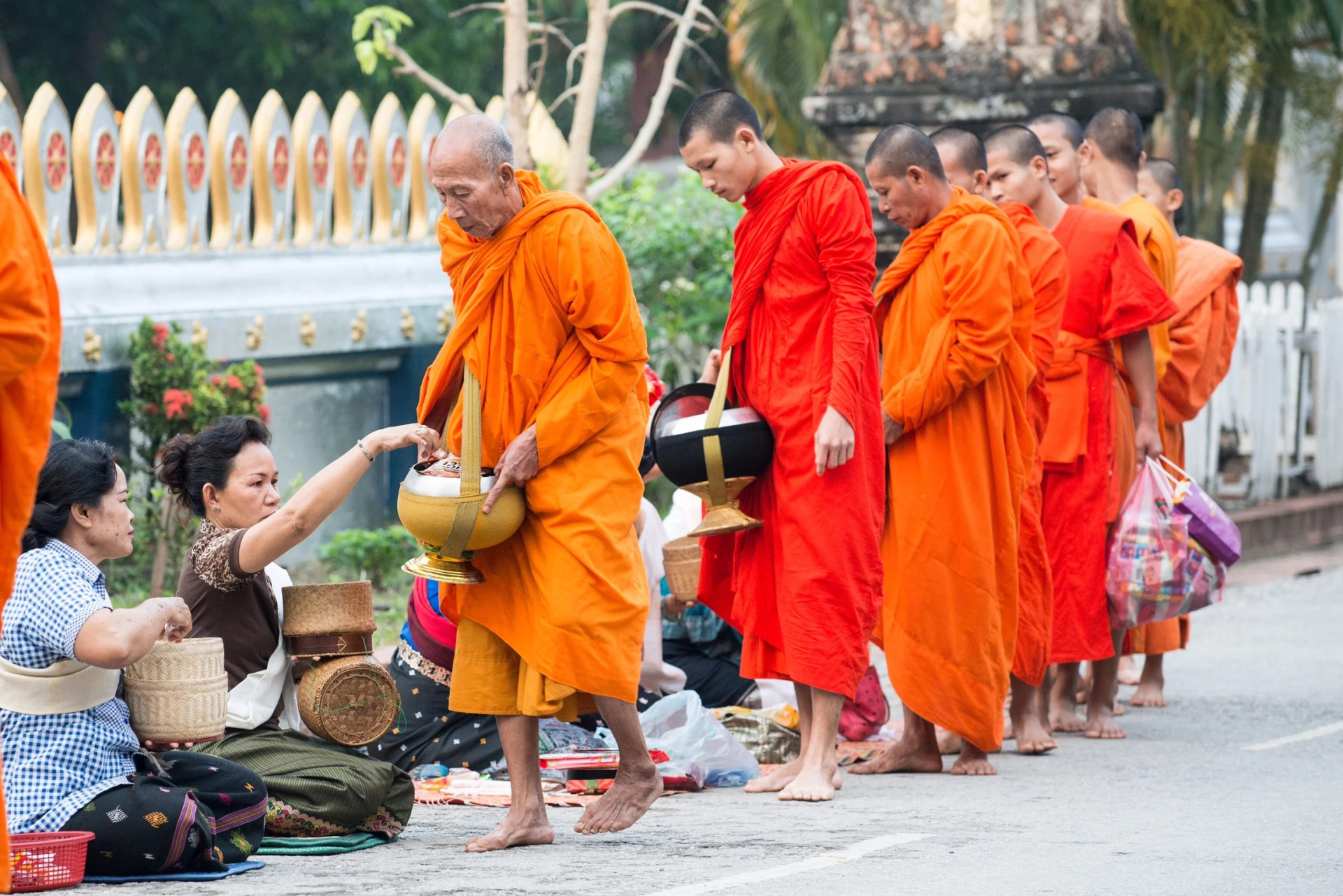
3. Visa & Entry Requirements for Laos
Laos offers a relatively easy visa process for most international travelers, with visa-free entry, visa on arrival, and eVisa options available depending on your nationality. Whether you're planning a quick trip or a longer adventure, understanding the latest visa policies will help you arrive with confidence and avoid any surprises at the border.
Visa-Free Entry
Citizens of several countries enjoy visa-free entry to Laos for stays ranging from 14 to 30 days, depending on the country of origin. These include:
- 14 days: Thailand, Myanmar, Cambodia, Vietnam (for ordinary passport holders)
- 15 days: Japan, South Korea, Russia, Luxembourg, Switzerland
- 30 days: ASEAN countries, Mongolia, and a few others
Make sure your passport is valid for at least 6 months, and have proof of onward travel if requested.
Visa on Arrival (VOA)
Laos offers Visa on Arrival to citizens of over 150 countries at most international airports and major land borders, including:
- Airports: Vientiane (Wattay), Luang Prabang, Pakse
- Land borders: Thai–Lao Friendship Bridges, checkpoints with Vietnam and Cambodia
- Validity: 30 days (can be extended once for 15–30 days at immigration offices)
- Fee: Typically USD 30–45, depending on nationality
- Requirements:
- Passport with 6 months’ validity
- One passport-sized photo
- Application form (available on arrival)
- Cash in USD or Thai Baht for payment
eVisa (Electronic Visa)
Laos now supports an official eVisa system, allowing eligible travelers to apply online before arrival. It’s a convenient option for those entering through select ports.
- Website: https://laoevisa.gov.la
- Processing time: Usually 3 business days
- Entry points accepted: Vientiane airport, Luang Prabang airport, Wattay bridge, Pakse airport
- Validity: 30 days from date of entry
- Fee: Similar to VOA (plus small processing fee)
Tourist Visa from Embassy
For travelers who want more flexibility, a tourist visa can be obtained in advance from any Lao embassy or consulate abroad.
- Single-entry visa: Valid for 30 days, extendable
- Documents required: Application form, passport, photo, and proof of travel
- Recommended for: Those entering through remote land borders or planning longer stays
Extensions & Overstays
- Extension: Available at immigration offices in major cities (e.g. Vientiane, Luang Prabang) for ~USD 2 per day
- Overstay fines: USD 10 per day beyond visa validity—payable on exit

Summary Table
| Visa Type | Who Can Use It | Stay Duration | Extendable | Where to Get It |
|---|---|---|---|---|
| Visa-Free Entry | ASEAN + select countries | 14–30 days | No | At border |
| Visa on Arrival | 150+ countries | 30 days | Yes | Airports & major land checkpoints |
| eVisa | Over 50 eligible nationalities | 30 days | Yes | laoevisa.gov.la |
| Embassy Visa | All nationalities | 30+ days | Yes | Lao embassies and consulates abroad |
Tips for Smooth Entry
- Carry cash (USD or Thai Baht) for visa fees
- Bring a passport photo (though some borders will take one for a small fee)
- Avoid overstaying—penalties are enforced
- Make photocopies of your visa and passport in case of loss
4. Best Time to Travel to Laos
Laos has a tropical monsoon climate, which means it’s warm and humid most of the year. While you can visit year-round, the cool and dry season from November to February is widely considered the best time to explore the country, especially for trekking, sightseeing, and river cruises. Understanding Laos’s three main seasons will help you plan the perfect journey based on your travel style and interests.
Cool & Dry Season (November to February): Best for Outdoor Exploration
This is peak travel season in Laos, thanks to pleasant weather and lower humidity. Temperatures range from 15–28°C, especially cool in the northern highlands.
- Luang Prabang: Enjoy temple visits, night markets, and boat trips along the Mekong in crisp, clear weather.
- Vang Vieng & Northern Laos: Ideal for trekking, caving, and kayaking with minimal rain and spectacular views.
- Southern Laos (Pakse & Si Phan Don): Comfortable for exploring waterfalls, coffee farms, and river islands.
Hot Season (March to May): Best for Festivals and Early Adventures
Temperatures climb to 35–40°C, particularly in the lowlands. It can be quite dry and dusty, but still a good time to travel with fewer crowds.
- Pimai Lao (Lao New Year): Celebrated in mid-April, this water festival is similar to Songkran in Thailand and is full of joy, local rituals, and water-throwing fun.
- Mountains & Highlands: Still bearable for travel thanks to slightly cooler temperatures at elevation.
Rainy Season (May to October): Best for Lush Scenery & Budget Travel
Rain showers usually come in the afternoon or evening, refreshing the landscape without ruining plans. Temperatures average 25–33°C.
- Vibrant Green Landscapes: Rice paddies, waterfalls, and jungle areas are at their most photogenic.
- Fewer Tourists & Lower Prices: Great for slow travelers or photographers looking for peace and atmosphere.
- Caution: Some rural roads can become muddy or impassable, and boat travel may be affected by water levels.
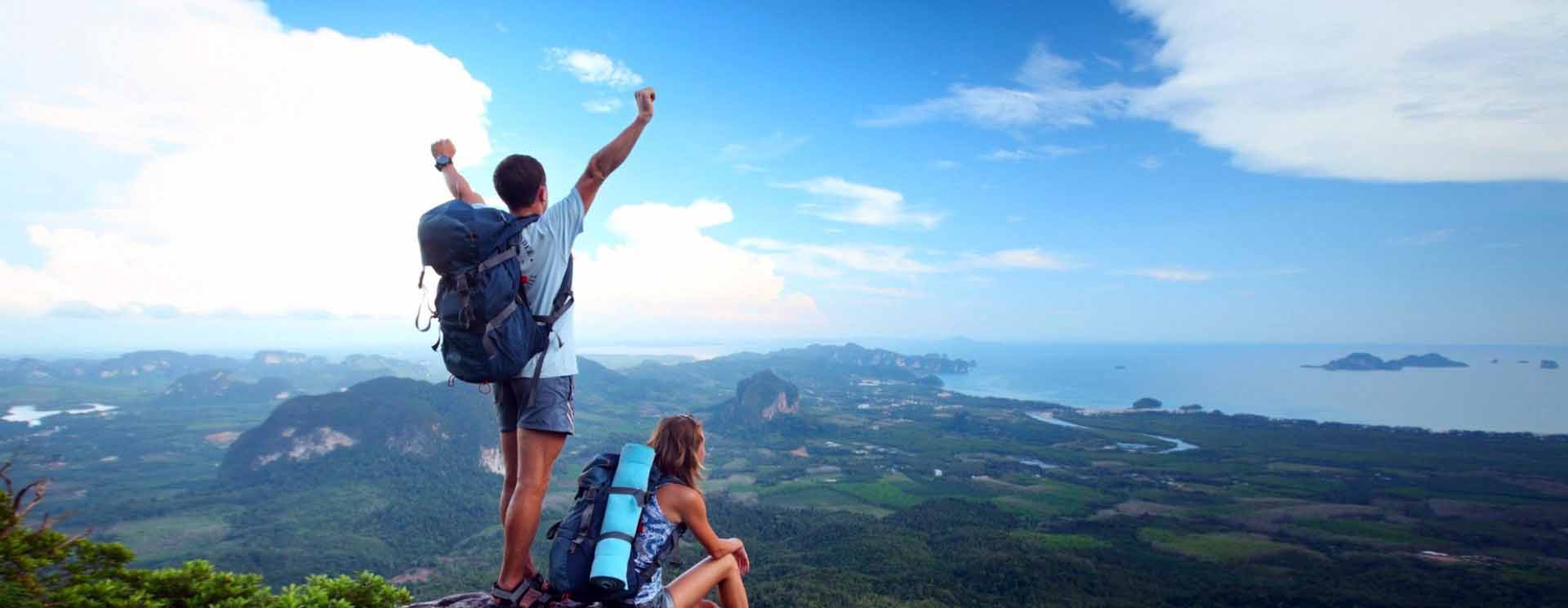
Travel Calendar Snapshot
| Interest | Best Months | Notes |
|---|---|---|
| Sightseeing & trekking | Nov – Feb | Dry, comfortable weather ideal for outdoor adventures |
| Cultural festivals | Apr (Lao New Year) | Nationwide celebration with parades and water fights |
| River travel | Nov – Jan | Mekong cruises are most scenic and stable |
| Lush scenery | Jul – Oct | Rain brings greenery and waterfall power |
| Budget travel | May – Oct | Off-peak prices and fewer tourists |
5. Best Places to Visit in Laos
Laos may be quieter than its neighbors, but its beauty runs deep. With ancient cities, misty mountains, cascading waterfalls, and slow-moving rivers, the country invites you to travel at a different pace. Here are the best places to visit in Laos—each offering something unique for culture lovers, nature seekers, and adventure travelers alike.
Luang Prabang – The Spiritual and Cultural Heart
A UNESCO World Heritage City, Luang Prabang is a graceful blend of Buddhist temples, French colonial architecture, and natural beauty. Wake up early to witness the almsgiving ceremony, where saffron-robed monks collect morning offerings. Explore gilded temples like Wat Xieng Thong, shop at the vibrant night market, and take a boat trip to the sacred Pak Ou Caves. Don’t miss a dip in the stunning turquoise pools of Kuang Si Falls.
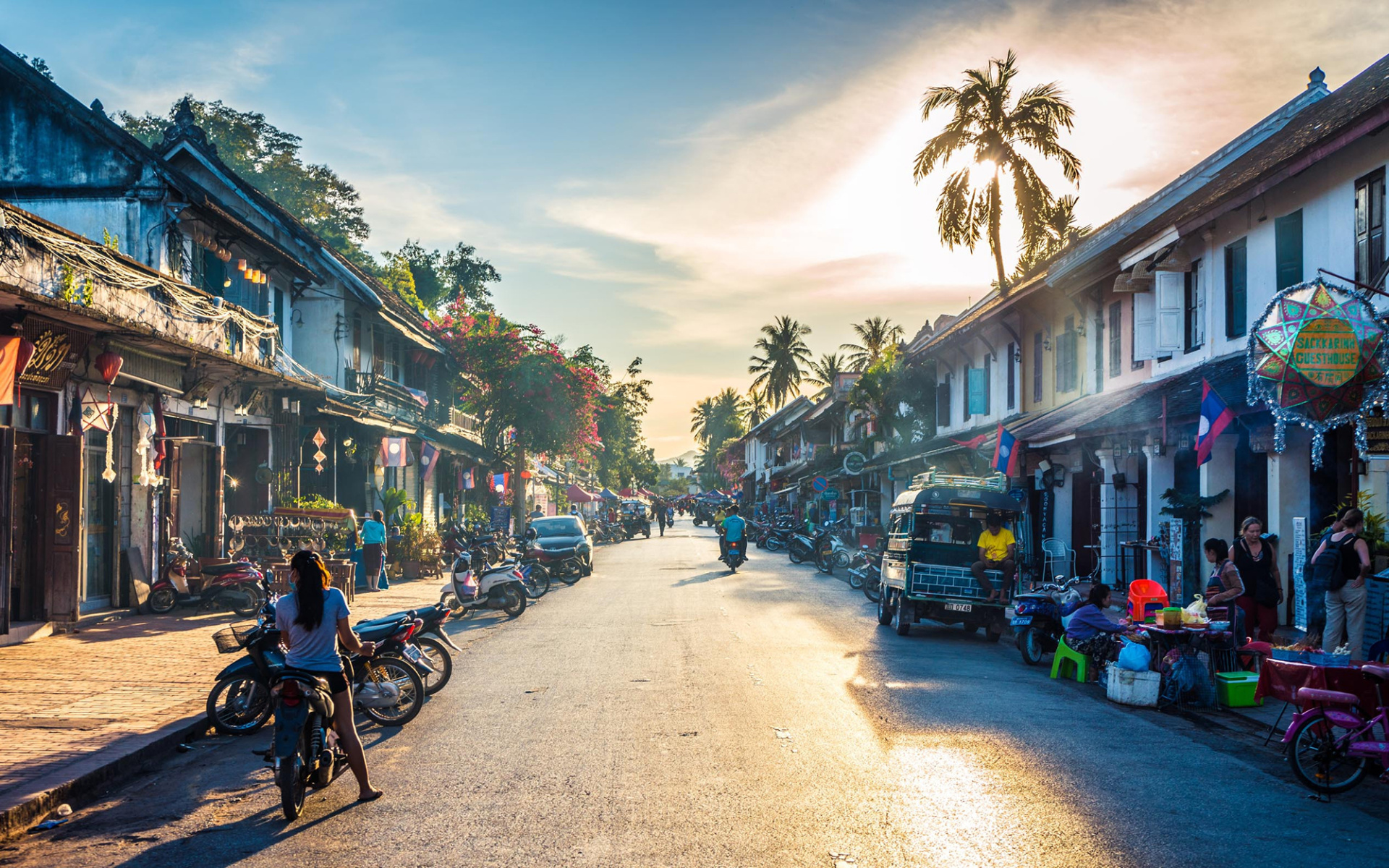
Vientiane – The Laid-back Capital
Often described as Asia’s sleepiest capital, Vientiane has a relaxed charm. Highlights include the golden Pha That Luang stupa, the riverside night market, and the quirky Buddha Park filled with giant sculptures. Stroll along the Mekong promenade at sunset, and enjoy French-Lao fusion cuisine at cozy cafés and bistros.
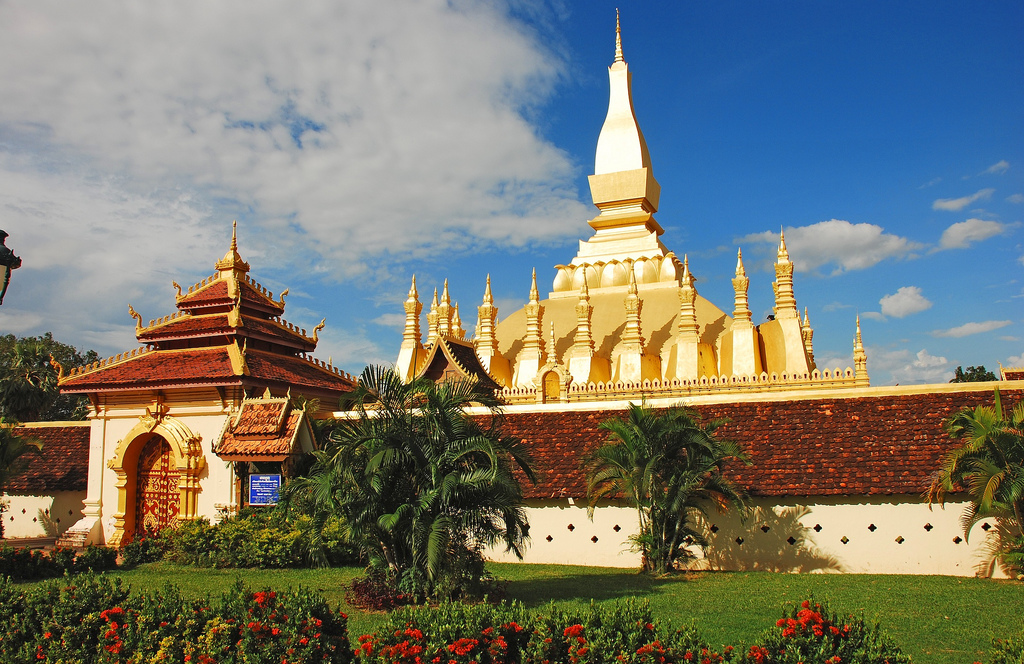
Vang Vieng – Limestone Landscapes & Adventure
Once known for its wild backpacker parties, Vang Vieng has transformed into a destination for eco-adventure. Surrounded by dramatic limestone karsts and rice fields, this riverside town is a hub for kayaking, hot air ballooning, zip-lining, tubing, and caving. Take in sunrise views from Pha Ngern viewpoint or unwind in one of its many riverside cafés.
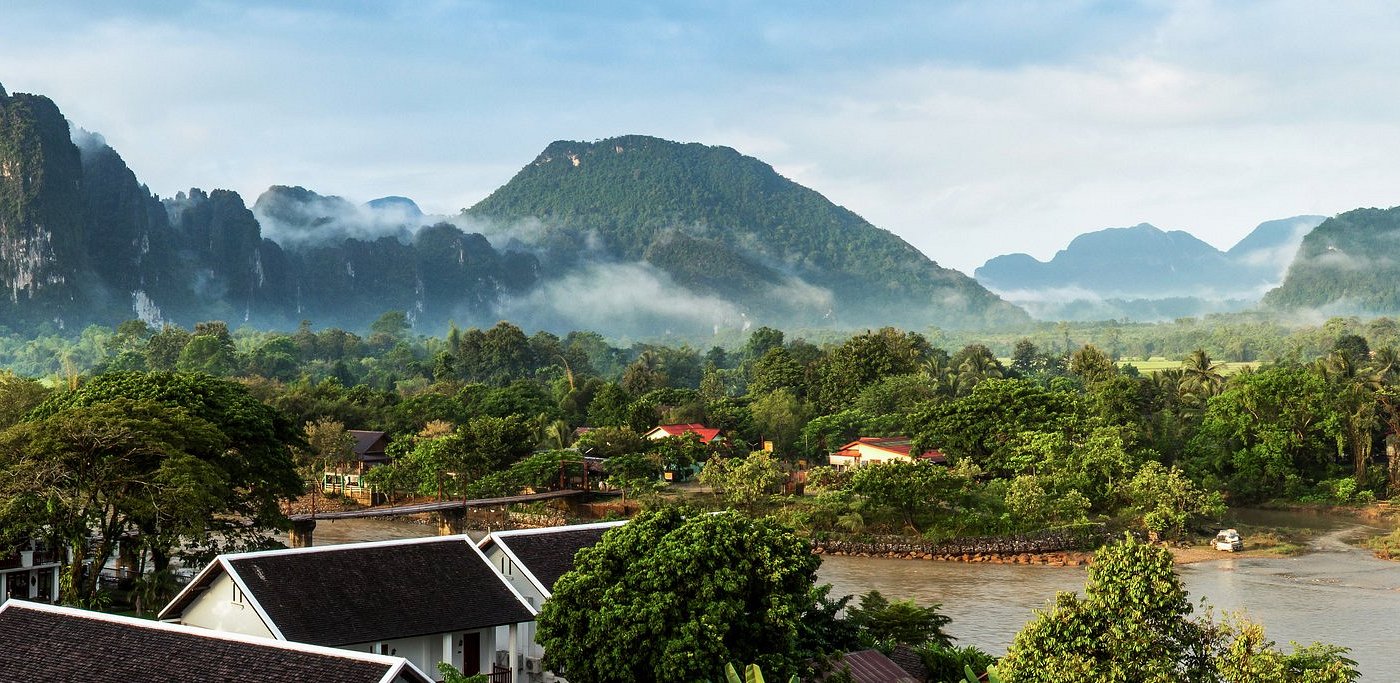
Plain of Jars – Mystery in the Highlands
Scattered across the plateau near Phonsavan, the Plain of Jars is one of Southeast Asia’s great archaeological enigmas. Thousands of stone jars, some weighing several tons, lie spread across grassy fields, their origin still debated. Combine your visit with insights into Lao history and the impact of the Secret War at the UXO (Unexploded Ordnance) Visitor Center.
Si Phan Don (4,000 Islands) – Laos’s Laid-Back River Paradise
In the far south of Laos, the Mekong River splinters into a labyrinth of tiny islands and sandbars, creating the peaceful region known as Si Phan Don. Relax in a hammock on Don Det or Don Khon, cycle through rice paddies, and catch a glimpse of the rare Irrawaddy dolphins. The mighty Khone Phapheng Falls, Southeast Asia’s largest by volume, is also nearby.

Pakse – Gateway to the Bolaven Plateau
A sleepy river town in southern Laos, Pakse is the ideal base for exploring the Bolaven Plateau, a region of cool climate, waterfalls, coffee plantations, and ethnic villages. Visit Tad Fane and Tad Yuang Falls, tour a local coffee farm, or ride the loop by motorbike for an unforgettable road trip.
Champasak – Ancient Khmer Ruins at Wat Phou
Near the banks of the Mekong lies Wat Phou, a pre-Angkorian Khmer temple complex set dramatically on a hillside. Older than Cambodia’s Angkor Wat, it’s a serene place to explore ancient stone carvings, sacred shrines, and sweeping river views. Combine with a homestay in one of the nearby traditional villages for a deeper cultural experience.
6. National Dishes You Can’t Miss in Laos
Laotian cuisine is one of Southeast Asia’s hidden gems—fresh, fiery, fragrant, and deeply rooted in tradition. While it shares some similarities with Thai and Vietnamese cooking, Laotian food has a distinct identity centered around sticky rice, bold herbs, fermented ingredients, and rustic preparation. Whether you’re sampling street food or joining a local family meal, these dishes will give you a true taste of Laos.
Larb (Laap) – The National Dish of Laos
Often called the national dish, Larb is a spicy minced meat salad made with pork, chicken, duck, beef, or fish, flavored with lime juice, fish sauce, ground toasted rice, mint, chili, and herbs. Served with sticky rice and raw vegetables, it’s bold, zesty, and absolutely addictive. Regional variations include both raw and cooked versions.
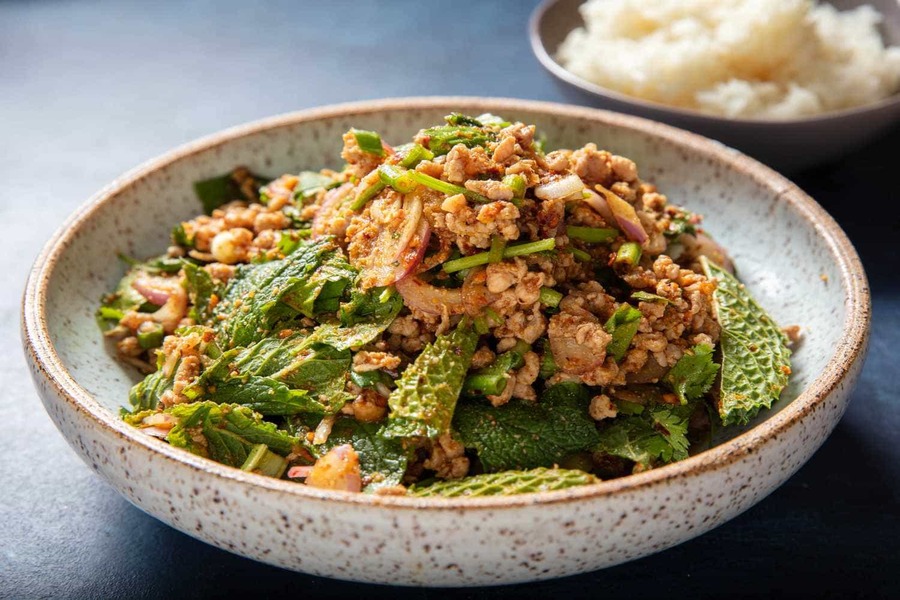
Sticky Rice (Khao Niew)
The cornerstone of every Laotian meal, Khao Niew is more than a side dish—it’s a way of life. Traditionally eaten with the hands, this glutinous rice is steamed in bamboo baskets and served in small woven containers. Locals use it to scoop up dips, curries, and meats. It pairs with almost everything in Lao cuisine.
Tam Mak Hoong – Lao Papaya Salad
Similar to Thai som tum but with a stronger, funkier flavor, Tam Mak Hoong is made with shredded green papaya, fermented fish sauce (padek), chili, lime, tomato, and long beans. It’s intensely savory and spicy, often served with crispy pork rinds or sticky rice.
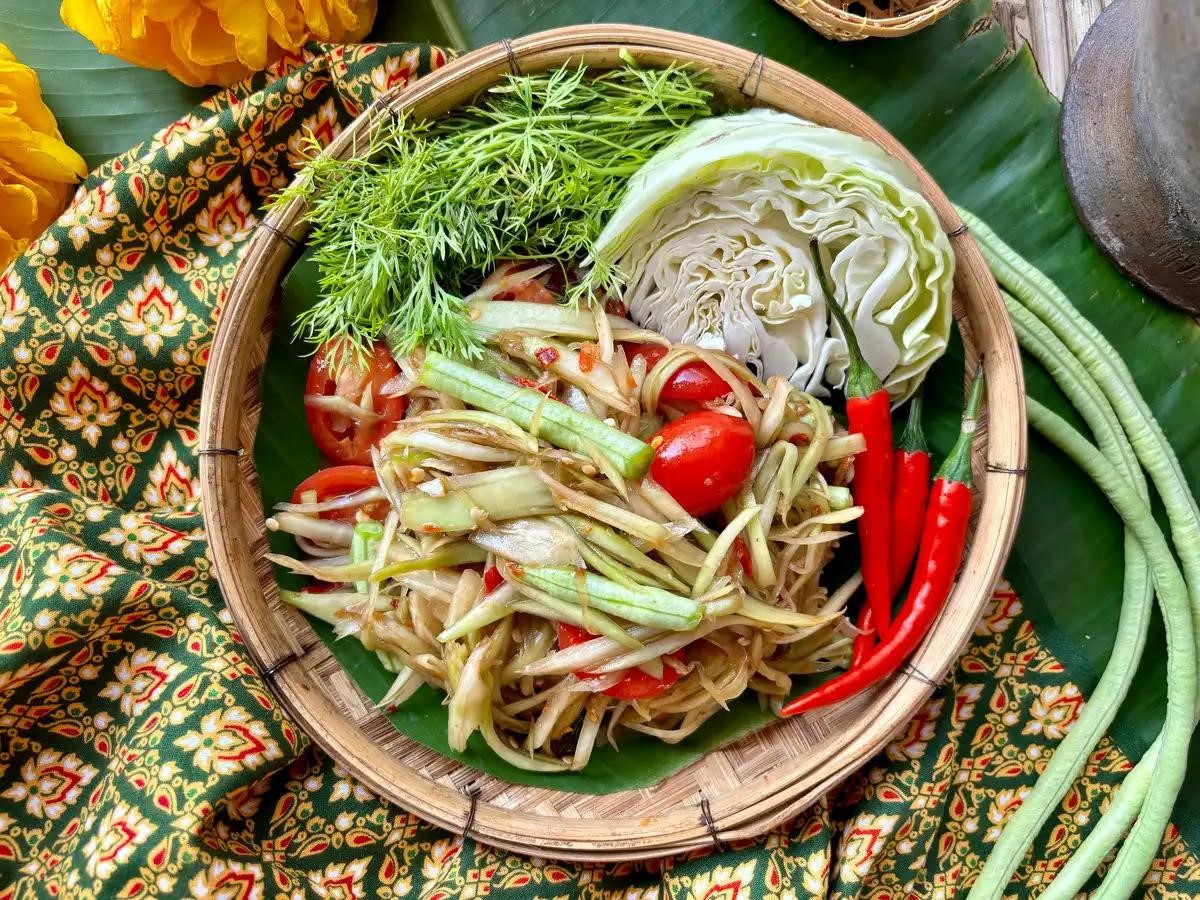
Or Lam – Spicy Stew from Luang Prabang
A comforting stew from northern Laos, Or Lam combines meat (often buffalo or chicken), eggplant, mushrooms, lemongrass, chili wood (sakhaan), and fragrant herbs. It has a slightly thick texture and a slow-building heat, best enjoyed with sticky rice on a cool evening.
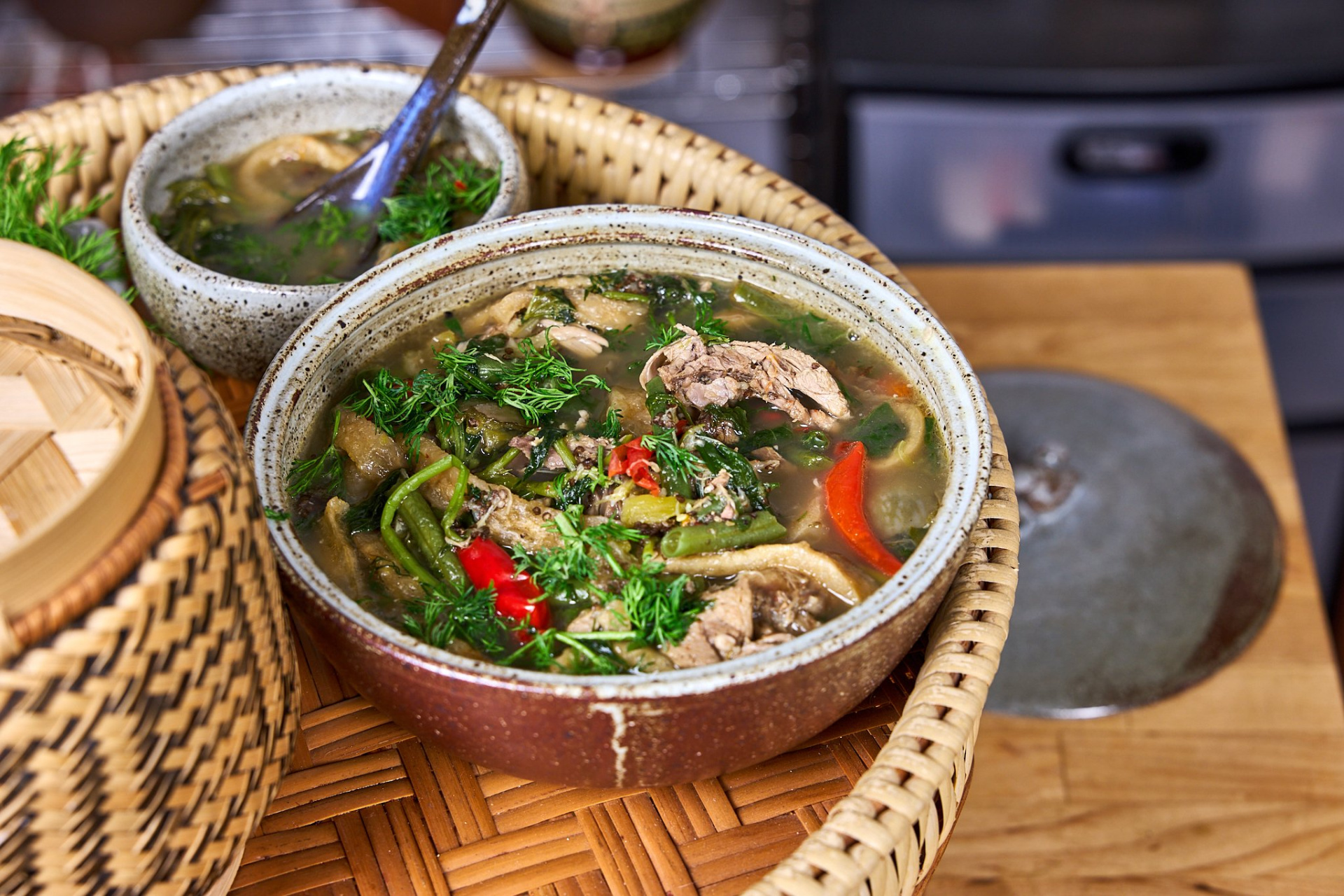
Khao Piak Sen – Lao Rice Noodle Soup
A favorite comfort food, Khao Piak Sen is similar to Vietnamese pho but uses thick, chewy rice noodles in a rich, garlicky broth. Topped with shredded chicken or pork, fried shallots, and fresh herbs, it's often eaten for breakfast or as a light lunch.
Sai Oua – Lao Herb Sausage
Made with minced pork, lemongrass, galangal, kaffir lime leaves, and chili, Sai Oua is a flavorful grilled sausage served with sticky rice and spicy dipping sauces. Though often associated with northern Thailand, its origins lie in Laos—especially Luang Prabang.
Mok Pa – Steamed Fish in Banana Leaf
Mok Pa is a traditional Lao dish where seasoned fish (with herbs, lime leaves, and dill) is wrapped in banana leaves and steamed. The result is fragrant, juicy, and aromatic—a perfect light dish with sticky rice and fresh greens.
Jeow – Traditional Lao Dips
Laotian meals often include one or more jeow, or spicy dips, served with vegetables and sticky rice. Variants include jeow bong (sweet-spicy chili paste with buffalo skin), jeow mak len (tomato-based), and jeow som (sour tamarind dip). They're simple but deeply flavorful.
Desserts & Sweets
- Khao Tom: Sticky rice with banana or beans wrapped in banana leaves and steamed.
- Nam Van: A sweet coconut milk dessert with tapioca, jelly, or fruit, served over ice.
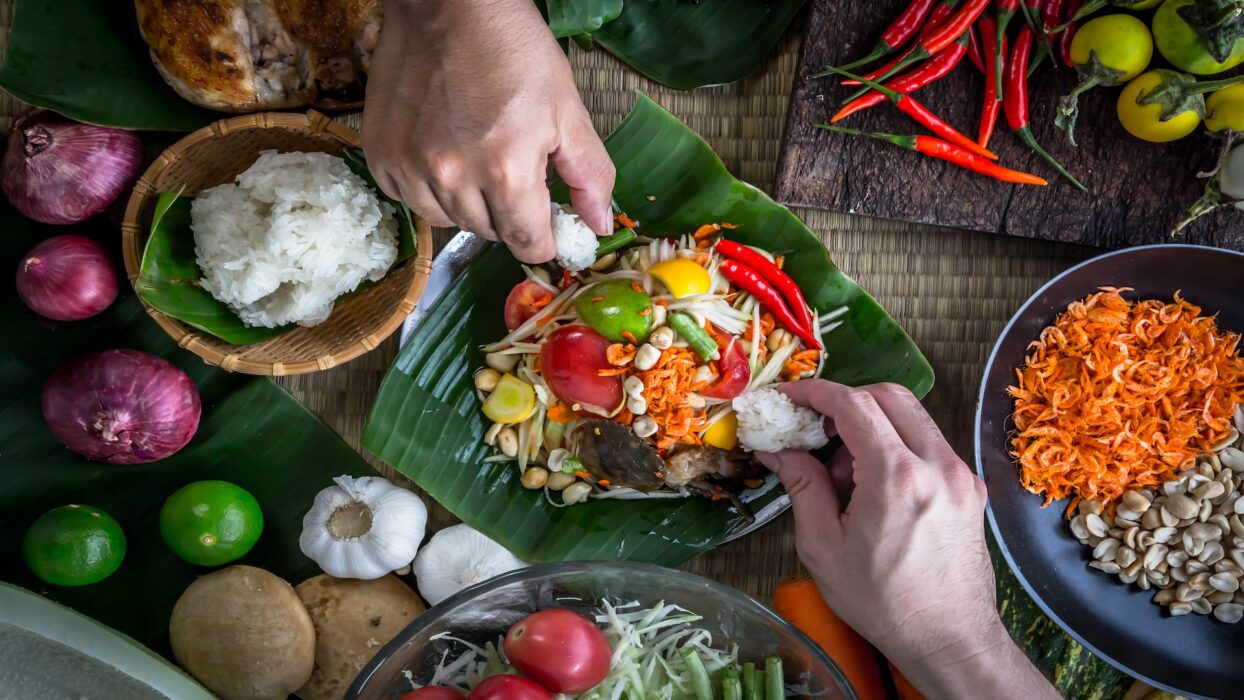
7. Holidays & Special Events in Laos
Laos has a rich calendar of traditional festivals (Boun) and national holidays, many of which are closely tied to Theravāda Buddhism, agrarian rhythms, and cultural identity. These events are not only colorful and meaningful, but also offer travelers authentic ways to connect with the Lao people and their way of life. If you plan your trip around these special dates, you're likely to witness music, dance, spiritual rituals, and heartfelt celebrations.
Pi Mai (Lao New Year)
When: April 13–15
Where: Nationwide, especially vibrant in Luang Prabang
What to Expect:
Laos’s biggest and most joyful celebration, Pi Mai (or Boun Pi Mai), marks the Lao New Year and the start of the rainy season. The festival features water fights (symbolizing cleansing and renewal), sand stupa building at temples, cultural performances, beauty contests, and family gatherings. In Luang Prabang, ancient traditions meet joyous chaos in a week-long celebration of life and renewal.
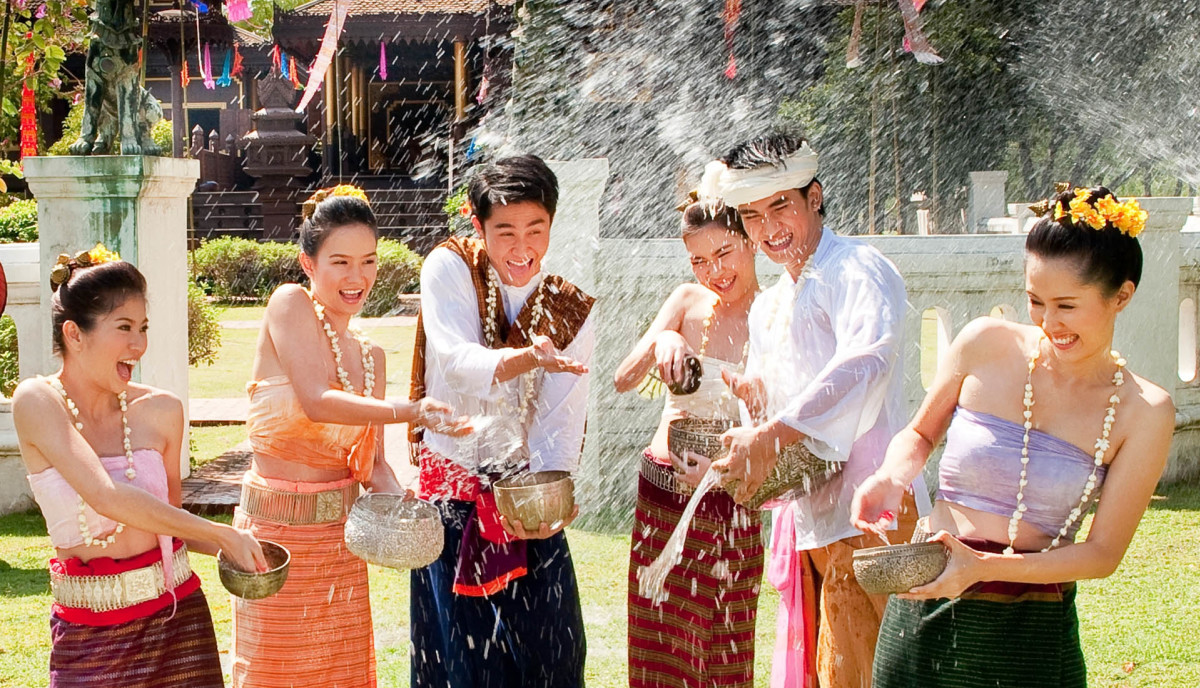
That Luang Festival (Boun That Luang)
When: November (full moon of the 12th lunar month)
Where: Vientiane
What to Expect:
Held at the iconic Pha That Luang, Laos’s most sacred stupa, this religious festival draws monks and pilgrims from across the country. The week-long event includes candlelight processions, traditional dance, almsgiving ceremonies, and a vibrant temple fair. It’s a deeply spiritual and cultural highlight of the Lao calendar.
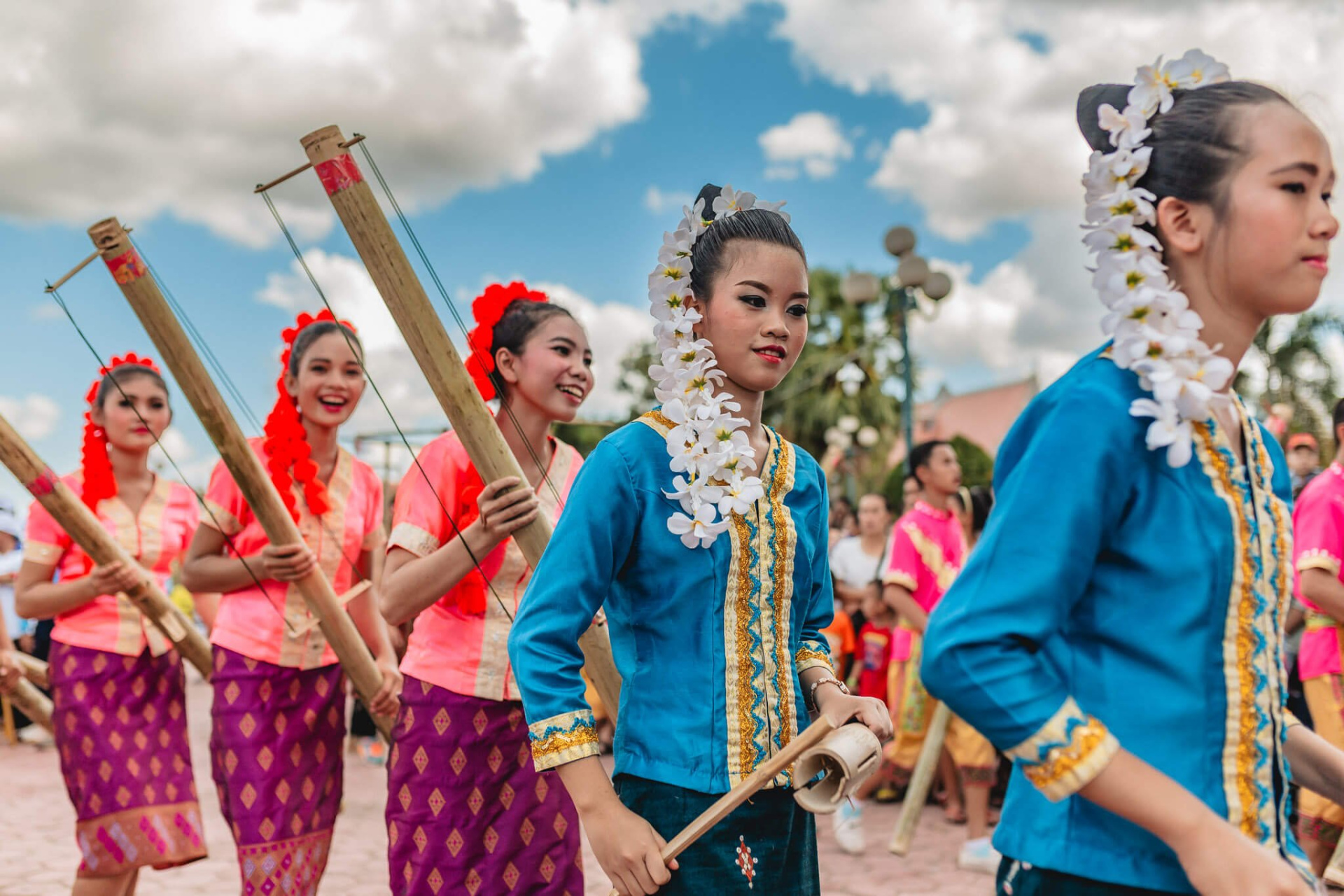
Boun Ok Phansa (End of Buddhist Lent)
When: October (full moon of the 11th lunar month)
Where: Nationwide
What to Expect:
Marking the end of the three-month rains retreat, this festival features temple offerings and boat racing ceremonies along the Mekong River. In cities like Vientiane, Savannakhet, and Pakse, longboat races with elaborately decorated boats take center stage. At night, people release candlelit floats into rivers to pay respect to the water spirits.
Boun Khao Padap Din & Boun Khao Salak (Ancestor Festivals)
When: August–September (lunar calendar)
Where: Temples across the country
What to Expect:
These are deeply spiritual days dedicated to honoring deceased ancestors. Families prepare food and offerings to present at temples, believing that spirits of the dead return briefly to receive merit. It’s a quiet, reflective time, but deeply moving for those interested in Buddhist culture.
Boun Bang Fai (Rocket Festival)
When: May (before the rainy season)
Where: Especially popular in rural areas of central and southern Laos
What to Expect:
Part fertility ritual, part pre-monsoon prayer, Boun Bang Fai features homemade bamboo rockets launched into the sky to encourage rain for rice planting. Expect music, dancing, costumes, rice wine, and a lively, often wild, village atmosphere.
Lao National Day
When: December 2
Where: Nationwide
What to Expect:
Commemorating the founding of the Lao People's Democratic Republic in 1975, this patriotic holiday includes parades, government ceremonies, cultural performances, and flag-raising events. It’s a good day to witness national pride and history in the making.
8. Top Things to Do in Laos
While Laos may not boast the mega-resorts or high-energy nightlife of its neighbors, it rewards travelers with authentic experiences, natural beauty, and spiritual depth. From tranquil river cruises to adrenaline-pumping zip lines, Laos offers a range of unforgettable activities that invite you to slow down, explore deeply, and connect meaningfully with the land and its people.
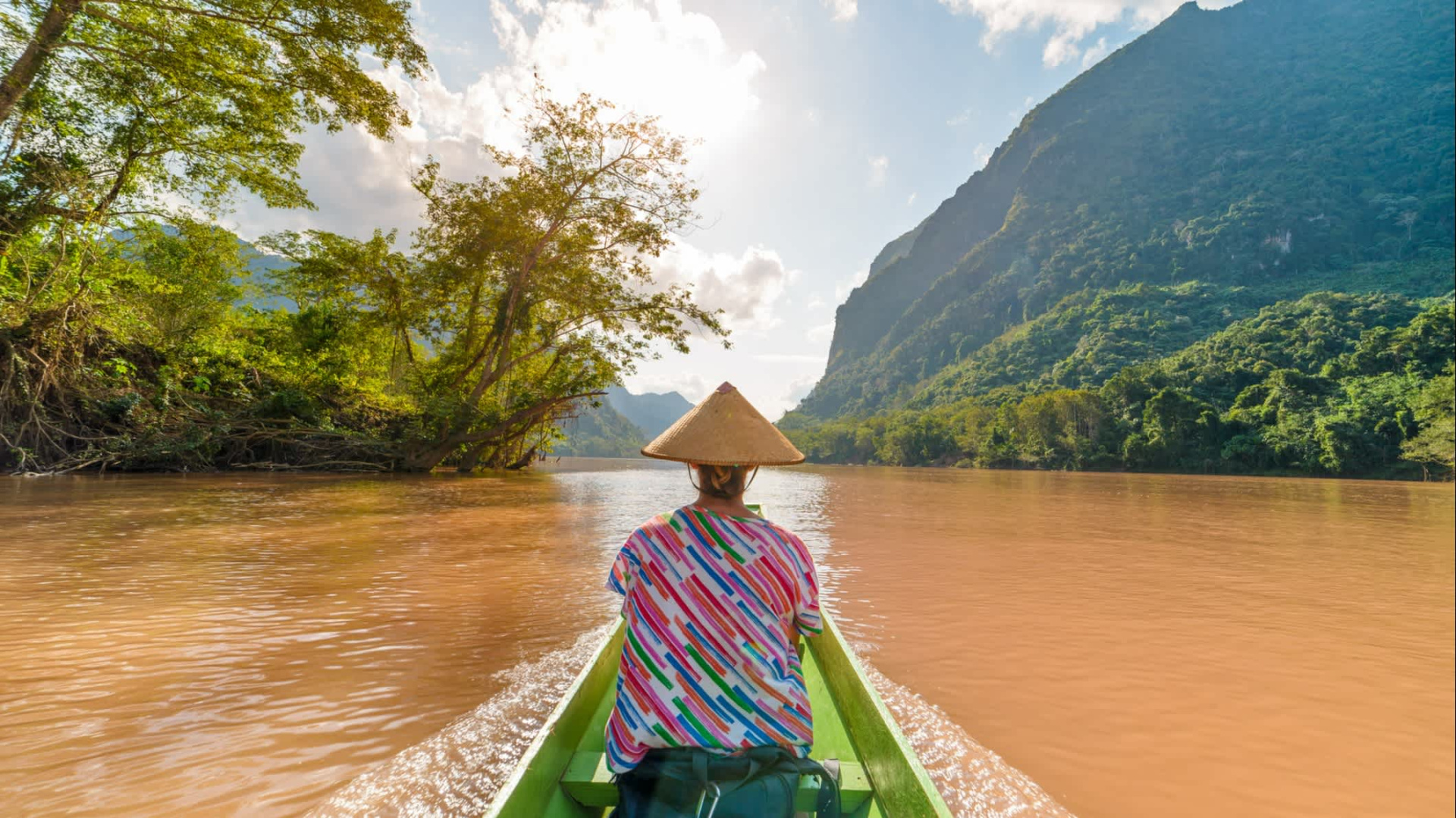
Cruise Along the Mekong River
The Mekong River is the lifeblood of Laos, winding through cities, villages, and remote countryside. A slow boat cruise from Huay Xai to Luang Prabang is one of the most iconic experiences in the country. As you drift past limestone cliffs, jungle, and riverside communities, you’ll gain insight into the rhythm of Lao life.
Explore the Temples and Colonial Charm of Luang Prabang
Wander the UNESCO-listed old town of Luang Prabang, where gilded Buddhist temples stand beside faded French villas. Visit Wat Xieng Thong, climb Mount Phousi for panoramic sunset views, and witness the early morning almsgiving ceremony, where locals offer food to silent lines of monks.
Go Caving and Tubing in Vang Vieng
Vang Vieng’s stunning karst landscape is perfect for adventure seekers. Explore ancient caves like Tham Chang or Tham Nam Water Cave, go tubing down the Nam Song River, or try rock climbing, zip-lining, and hot air ballooning. It’s a natural playground with spectacular scenery.
Visit the Mysterious Plain of Jars
In Phonsavan, you’ll find thousands of ancient stone jars scattered across the plains—part of an archaeological mystery still unsolved. Combine your visit with a trip to the UXO Visitor Center, which educates visitors about the impact of the Secret War and Laos’s ongoing efforts to remove unexploded ordnance.
Swim in Waterfalls and Trek in the Bolaven Plateau
In southern Laos, the Bolaven Plateau offers cool weather, fertile soil, and some of the country’s most beautiful waterfalls, including Tad Fane, Tad Yuang, and Tad Lo. The area is also home to coffee plantations and ethnic minority villages, ideal for multi-day treks and motorbike loops.
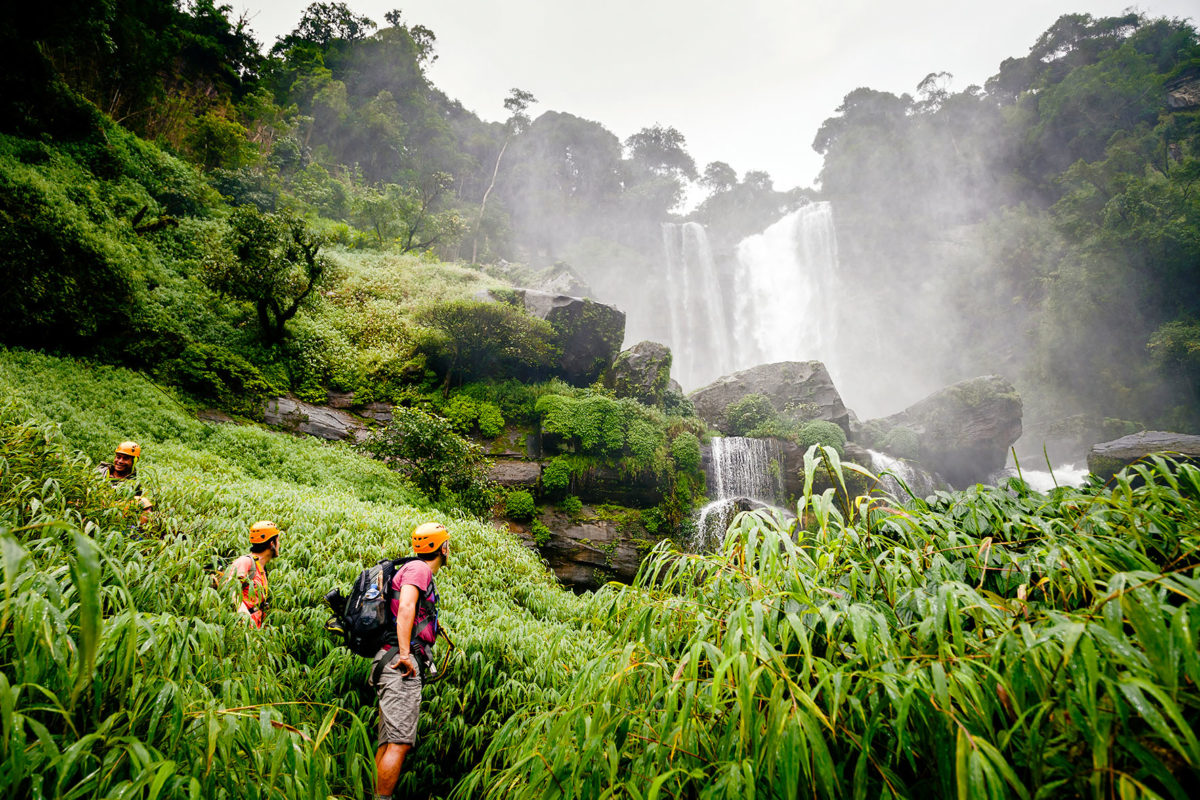
Spot Irrawaddy Dolphins in Si Phan Don (4,000 Islands)
Head to the laid-back islands of Don Det and Don Khon, where you can cycle through rice fields, kayak along the Mekong, and try to spot the endangered
Other Articles
YOU MAY ALSO LIKE
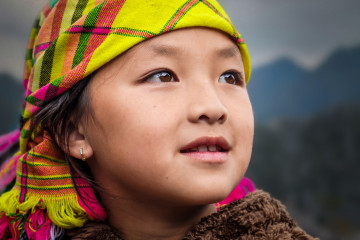
23 DAYS - Private Vietnam 23 Days 22 Nights - Major of VietNam Trip
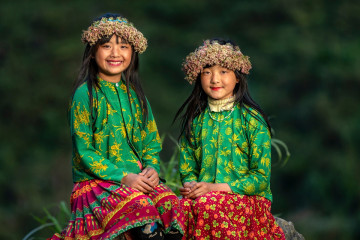
19 DAYS - Private Vietnam 19 Days 18 Nights - Explore Vietnam
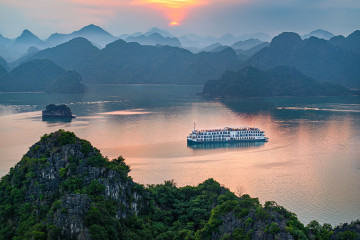
38 DAYS - Private Vietnam- Laos- Cambodia- Thailand 38 Days 37 Nights - Indochina Odyssey
Speak to Your Local Travel Expert





